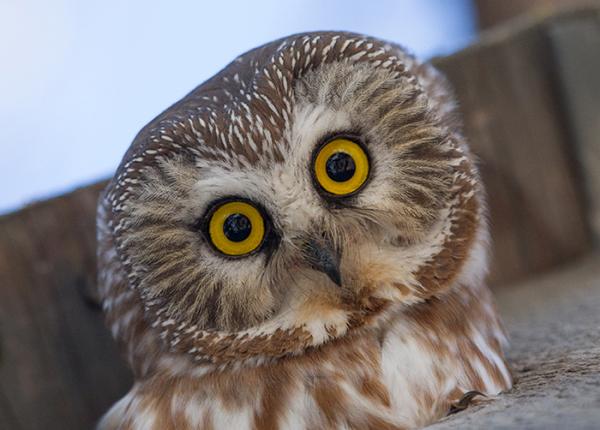From Badger Run Wildlife Rehab
If you have Barn Owl nesting boxes the time to clean them is when they are unoccupied. For most parts of the country that is going to be between Halloween and EARLY December.
These birds don’t remove the regurgitated pellets they cast after their meals so these boxes can get pretty gross by the end of a nesting season.
Barn Owls bring no nesting material into their nest boxes to lay their eggs and will use regurgitated pellets as a nest substrate to lay them on, HOWEVER, it’s best not to rely on these in man-made boxes.
An owl laying their eggs in a natural spot like a tree cavity will have a nice uneven, soft floor of softened wood to lay eggs on. Hay bales likewise make a soft, uneven surface. In both of these cases, eggs won’t be rolling around on a hard surface like a nest box floor of wood or plastic. So, in man-made boxes it’s best to add 3 or 4 inches of bedding over the entire floor.
Avoid fine material like laboratory bedding, sawdust, ground corn cob, loose straw, or shredded wood. As the parent tears prey apart to feed the youngest owlets, pieces of fine bedding stick to the food and are eaten by the youngsters. Large-pieced mulch such as garden mulch is perfect. This can be hardwood, pine, fir, or many other types of wood. Avoid cedar because it emits irritating fumes.


I’ve seen one barn owl in my area ever, out near a golf course. I live in a suburban area with lots of tawny and little owls. Is it worthwhile to add an owl box onto the side of my house?
Barn Owl Trust is UK based and has tips for determining if your property and local environment is suitable for Barn Owls.
I saw one Barn Owl in my area, the only owl I’ve seen in the wild randomly, about 30 years ago. I was talking to our clinic director asking when we were going to get some Barnies in, and she said in her 15 years there, she’s never gotten a single one. The clinic is about 10 minutes from where I grew up and still has a lot of farmland that seems like it would be good owl territory, but we get Screeches and Great Horns, and that seems to be the bulk of it.
If you’re not hearing them screeching in your area and you only have the side of a house, both of those seem lower in the likelihood of attracting one, but perhaps the Tawnies or Little Owls may be more suited to where you are. I’m not as familiar with them, as we don’t have either of those here, but our North American versions, the Barred and Burrowing Owls often make homes near people and in more public areas.
Barn Owl box prime locations
Barn Owl box construction